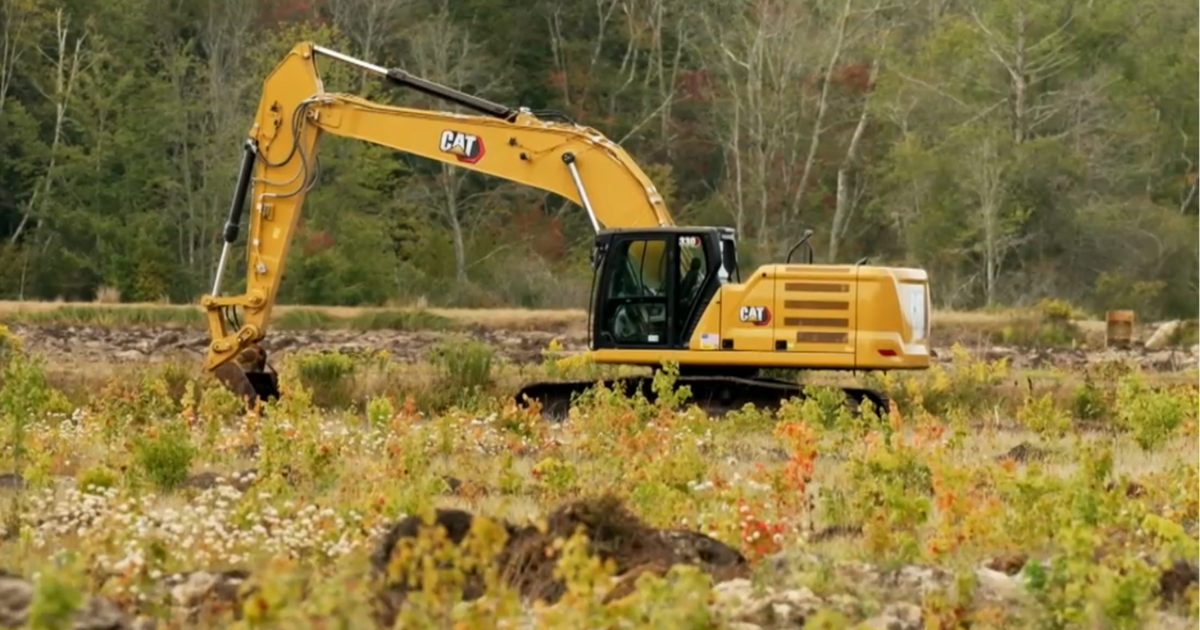
Carver, Massachusetts — For Jarrod Rhodes, a fourth-generation cranberry farmer in Carver, Massachusetts, a 30-acre state project is taking a portion of his family’s land back in time.
“In 10 years, I hope it looks like a natural swamp,” Rhodes told CBS News of the project’s outcome. “And just, kind of, everything that it may have looked like, you know, before we were here.”
As cranberry prices fall due to global competition and costs increase due to labor issues, higher utility costs and extreme weather, cranberry farmers like Rhodes are part of the Massachusetts Division of Ecological Restoration’s Cranberry Bog Program that pays farmers to turn unproductive bogs back into wetlands.
The restoration project for the bogs owned by the Rhodes family is about 95% complete. It will be only a matter of time before native plants begin to return.
Massachusetts has restored over 500 acres of wetlands over the past 15 years through the program, with another 500 acres planned.
According to the Massachusetts Division of Ecological Restoration, the state has about 13,250 acres of cranberry farms. Massachusetts is the second-largest grower of cranberries in the U.S. behind Wisconsin, according to the U.S. Department of Agriculture.
The state allocates around $1 million a year to the restoration program, while leveraging other local and federal grants to do these restorations.
For Massachusetts cranberry farmers, the program is one way to preserve their land as a generation of farmers nears retirement.
“They want to make sure that the land that they’ve tended to for so long is like, in good hands, whether that be a restoration program, or passing it on to the next generation,” said Karen Cahill, deputy executive director of the Cape Cod Cranberry Growers Association, a trade group which represents cranberry farmers in the state.
Under the program, the farmers keep the land, but the public can enjoy it too. An example of a restoration process that worked was the Eel River headwaters in Plymouth in 2010, where 60 acres of former bogs are now beautiful wetlands, filtering water, storing carbon and providing storm resilience. They are also open for hiking and wildlife.
Beth Lambert helps oversee the state’s restoration program, including the projects at Eel River and Carver.
“Many of the cranberry farms in Massachusetts were constructed on wetlands,” Lambert said. “And what we’re doing is, we’re restoring those underlying drivers of water, the soil, and then we let Mother Nature take it from there.”
Back on Rhodes’ farm, streams now wind through areas where cranberry vines once grew.
“It’s cool to see it kind of all bare,” Rhodes said. “Just kind of waiting for it to grow back and see if it actually works the way that it was supposed to.”
Source link

